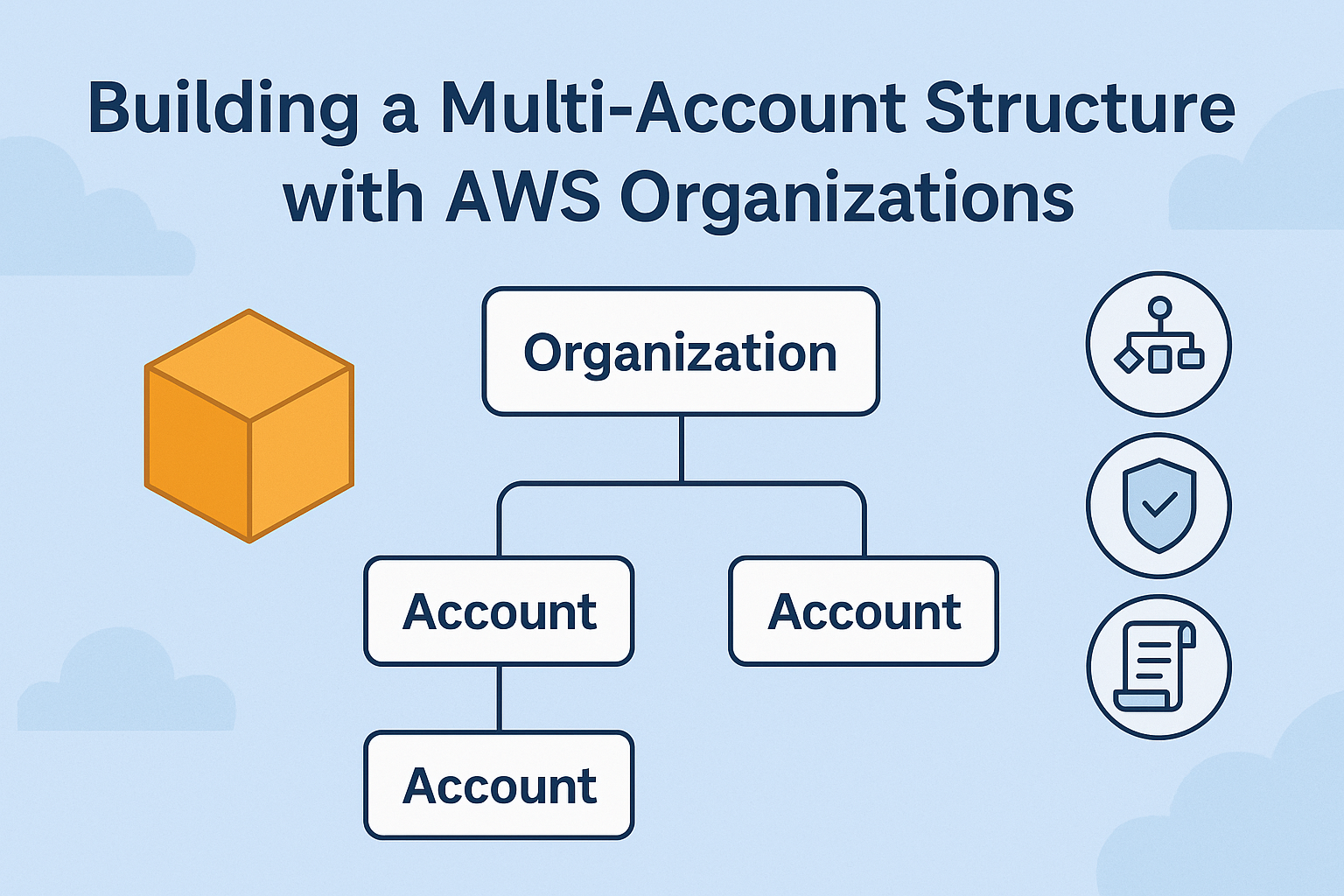
Why Multi-Account > One Big Account: How AWS Organizations Brings Order to the Cloud
When most businesses first start on AWS, the default thinking is simple: “Let’s put everything in one account.”
At first, this works fine. A single account feels easy to manage, billing is straightforward, and you don’t have to think about separating workloads.
But over time, that simplicity becomes chaos. Development and production environments get tangled together. Permissions overlap. Billing turns into a black hole where costs can’t easily be traced back to a team or project. And worst of all, a single misconfiguration can have ripple effects across your entire organization.
That’s where AWS Organizations changes the game.
By enabling businesses to build a multi-account structure, AWS Organizations brings governance, clarity, and resilience to the cloud. Instead of “one big account running everything,” each environment, workload, or department gets its own space, managed under a central umbrella.
What AWS Organizations Offers
1. Centralized Management
Think of AWS Organizations as the head office of your cloud. From a single management account, you can create, invite, and oversee multiple accounts — whether it’s Finance, HR, Dev, or Production. This eliminates the sprawl of ad-hoc accounts and brings all cloud operations under one roof.
2. Organizational Units (OUs)
OUs let you group accounts by purpose (e.g., Prod, Dev, Sandbox, Shared Services). Policies applied at the OU level cascade down to all accounts within, ensuring consistent governance without repetitive manual work.
3. Consolidated Billing
Instead of juggling invoices for each account, AWS Organizations rolls everything into one consolidated bill. Costs are still broken down per account, giving businesses clear visibility into who is spending what. This makes chargebacks, budgeting, and cost optimization much easier.
4. Service Control Policies (SCPs)
SCPs are like the guardrails of your organization. Want to block the use of certain AWS regions? Restrict root user access? Prevent teams from disabling CloudTrail? SCPs let you enforce rules across every account in your organization, reducing risk and keeping compliance in check.
5. Integration with IAM Identity Center
When paired with IAM Identity Center (AWS SSO), AWS Organizations becomes even more powerful. Instead of logging into multiple accounts with different credentials, users log in once and switch between accounts seamlessly, with roles and permissions defined centrally.
The Problems AWS Organizations Solves
Scalability for Growth
As operations expand, new accounts can be spun up quickly under the same governance model. This ensures scaling doesn’t equal chaos.
Risk Isolation
By splitting workloads across accounts, the blast radius of mistakes or breaches is minimized. An issue in Dev won’t take down Production.
Clear Responsibility
Each account is tied to a specific team or workload, which means ownership is crystal clear. No more finger-pointing when bills spike.
Better Cost Control
With consolidated billing and per-account cost visibility, businesses can identify waste, optimize usage, and ensure accountability for spending.
Stronger Governance at Scale
Instead of manually setting security rules in each account, OUs and SCPs allow organizations to enforce standards once and apply them everywhere.
Managing everything in one AWS account may seem easier at first, but it quickly becomes unsustainable. AWS Organizations provides the structure businesses need to scale confidently — with centralized control, strong governance, and clear cost visibility.
By adopting a multi-account strategy, companies not only reduce risk but also set themselves up for faster innovation, cleaner operations, and long-term cloud success.
In the cloud, order beats chaos every time, and AWS Organizations is how you get there.